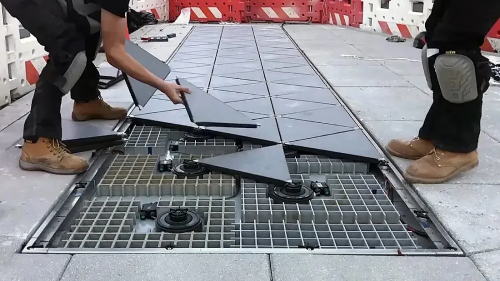Japan is once again pushing the boundaries of smart-city innovation with its latest experiment in renewable urban energy: piezoelectric floor tiles that convert the pressure of footsteps into usable electricity. Installed in high-traffic locations such as Shibuya Station, these futuristic tiles are designed to capture the energy produced by millions of daily steps across one of the world’s busiest transit hubs.
The concept recently went viral after a social media post claimed that 900,000 daily walkers were “powering the world.” Although catchy, experts have clarified that this claim is exaggerated. While the tiles do work and generate electricity, the amount produced from each step is extremely small—typically only enough to illuminate decorative LEDs, power small device displays, or assist low-energy systems like ticket gates.
Still, the technology is far from insignificant. Piezoelectric energy harvesting is a growing field that explores how everyday human movement can contribute to sustainable micro-power systems. By embedding piezoelectric materials beneath pedestrian walkways, Japan is turning ordinary foot traffic into a real-time research opportunity.
At Shibuya Station, where pedestrian flow can exceed half a million movements in a single day, engineers are collecting valuable data on power output, durability, cost efficiency, and long-term performance under constant pressure. The project demonstrates how micro-energy systems could play a supplemental role in future eco-friendly infrastructure.
Although the tiles won’t be powering cities anytime soon, they represent a promising window into how urban environments might someday harness all available energy—from footsteps to vibrations—to reduce reliance on conventional power sources. Japan’s initiative blends innovation with environmental awareness, showing how even the smallest step can contribute to a more sustainable world.







